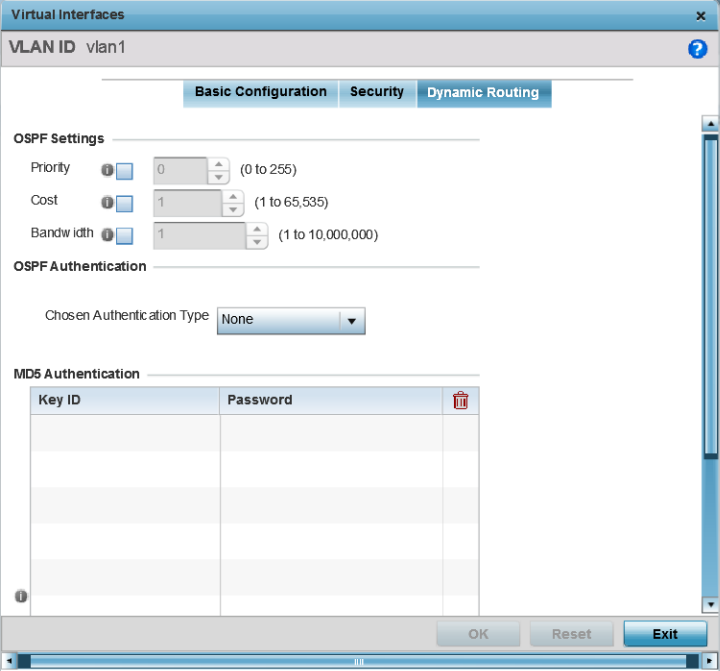To define a dynamic routing configuration:
Select the Dynamic Routing tab.

Set the following OSPF Settings:
|
Priority |
Select this option to enable or disable OSPF priority settings. Use the spinner to configure a value from 0 - 255. This option sets the priority of this interface becoming the Designated Router (DR) for the network. DRs provide routing updates to the network by maintaining a complete topology table of the network and sends the updates to the other routers in the network using multicast. Setting a high value increases the chance of this interface becoming a DR. Setting this value to zero prevents this interface from being elected a DR. |
|
Cost |
Select this option to enable or disable OSPF cost settings. Use the spinner to configure a cost value from 1 - 65535. Use this option to set the OSPF cost of this interface. OSPF cost is the overhead required to send a packet over this interface. |
|
Bandwidth |
Set the OSPF bandwidth from 1 - 10,000,000 KBps. |
Set the following OSPF Authentication settings for the dynamic route:
| Chosen Authentication Type |
Select the authentication type used to validate credentials within the OSPF dynamic route. Options include simple-password, message-digest, null and None. |
| Authentication Key |
Enter and confirm the authentication key required by connecting nodes using the OSPF dynamic route. |
Select the + Add Roww button (at the bottom of the MD5 Authentication table) to add the Key ID and Password used for an MD5 validation of authenticator credentials.
Use the spinner control to set the OSPF message digest authentication key ID. The available range is from 1 - 255. The password is the OSPF key either displayed as series or asterisks or in plain text (by selecting Show).
Select OK to save the changes to the configuration. Select Reset to revert to the last saved configuration